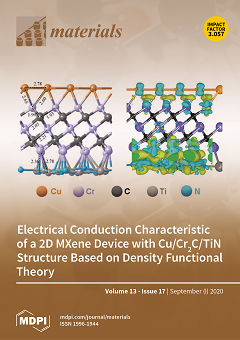An original vision for the structural formation of (Sm,Zr)(Co,Cu,Fe)
Z alloys, the compositions of which show promise for manufacturing high-coercivity permanent magnets, is reported. Foundations arising from the quantitative analysis of alloy microstructures as the first, coarse, level of heterogeneity are considered. The
[...] Read more.
An original vision for the structural formation of (Sm,Zr)(Co,Cu,Fe)
Z alloys, the compositions of which show promise for manufacturing high-coercivity permanent magnets, is reported. Foundations arising from the quantitative analysis of alloy microstructures as the first, coarse, level of heterogeneity are considered. The structure of the alloys, in optical resolutions, is shown to be characterized by three structural phase components, which are denoted as A, B, and C and based on the 1:5, 2:17, and 2:7 phases, respectively. As the chemical composition of alloys changes monotonically, the quantitative relationships of the components A, B, and C vary over wide ranges. In this case, the hysteretic properties of the (Sm,Zr)(Co,Cu,Fe)
Z alloys in the high-coercivity state are strictly controlled by the volume fractions of the A and B structural components. Based on quantitative relationships of the A, B, and C structural components for the (R,Zr)(Co,Cu,Fe)
Z alloys with R = Gd or Sm, sketches of quasi-ternary sections of the (Co,Cu,Fe)-R-Zr phase diagrams at temperatures of 1160–1190 °C and isopleths for the 2:17–2:7 phase composition range of the (Co,Cu,Fe)–Sm–Zr system were constructed.
Full article






